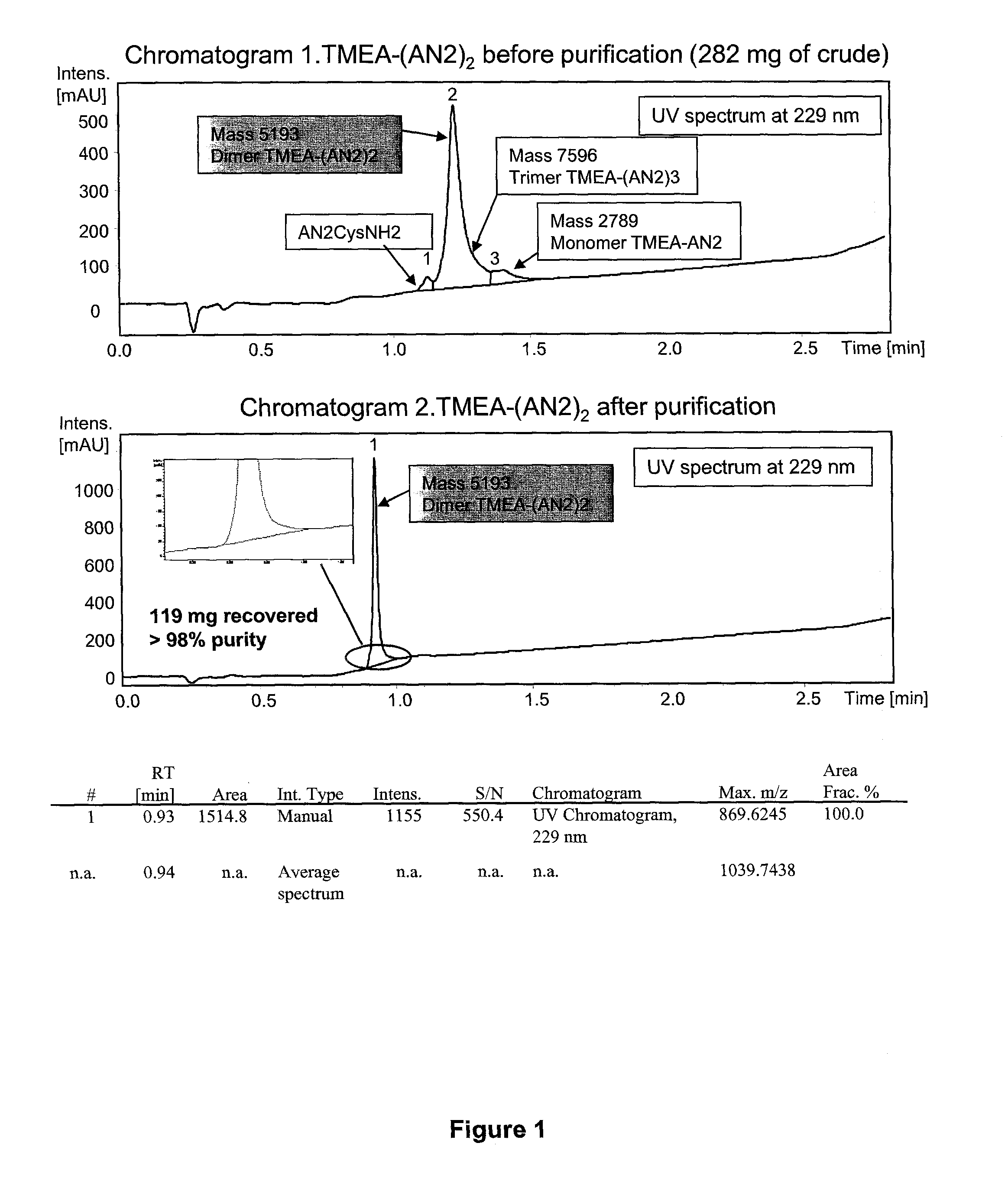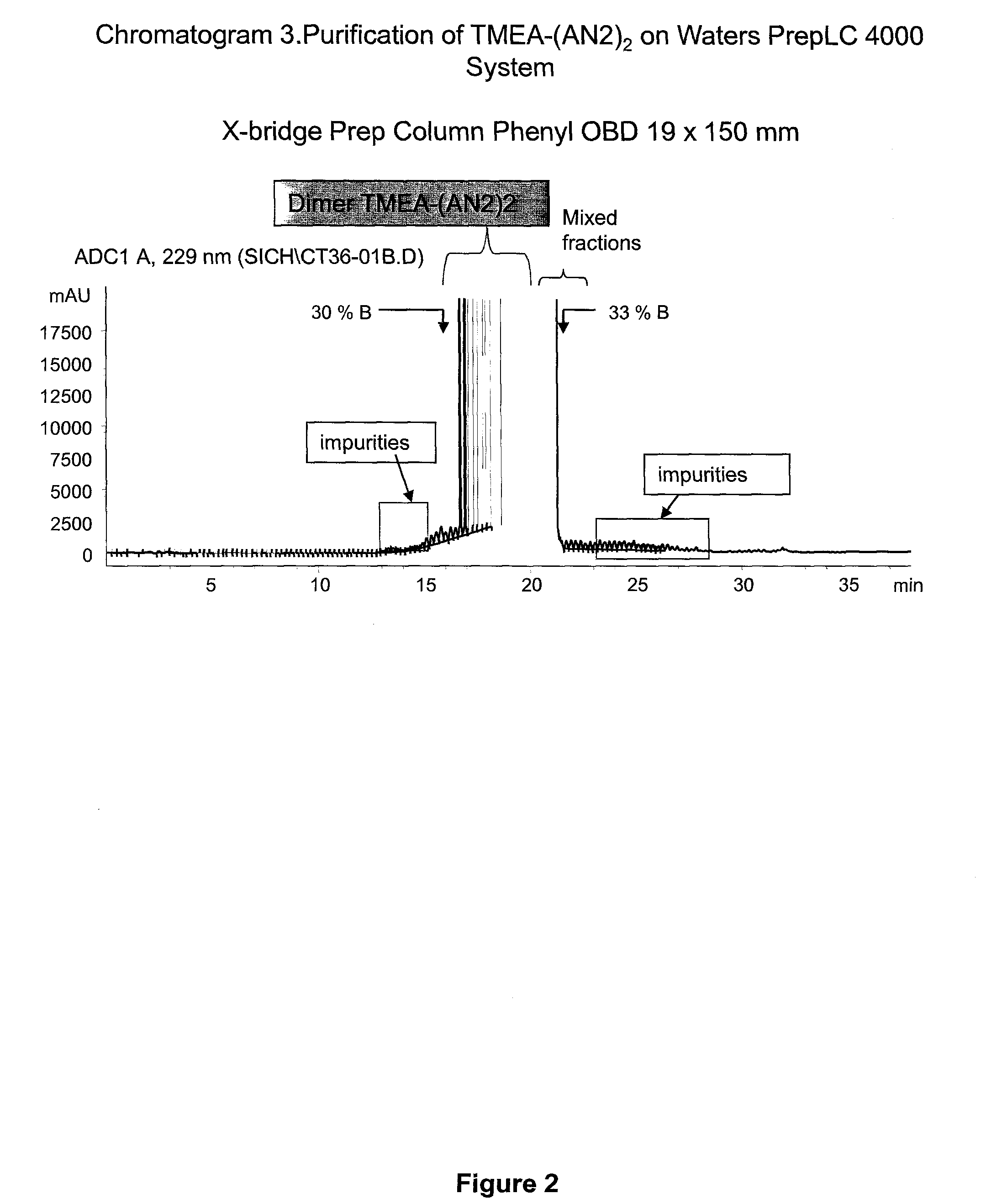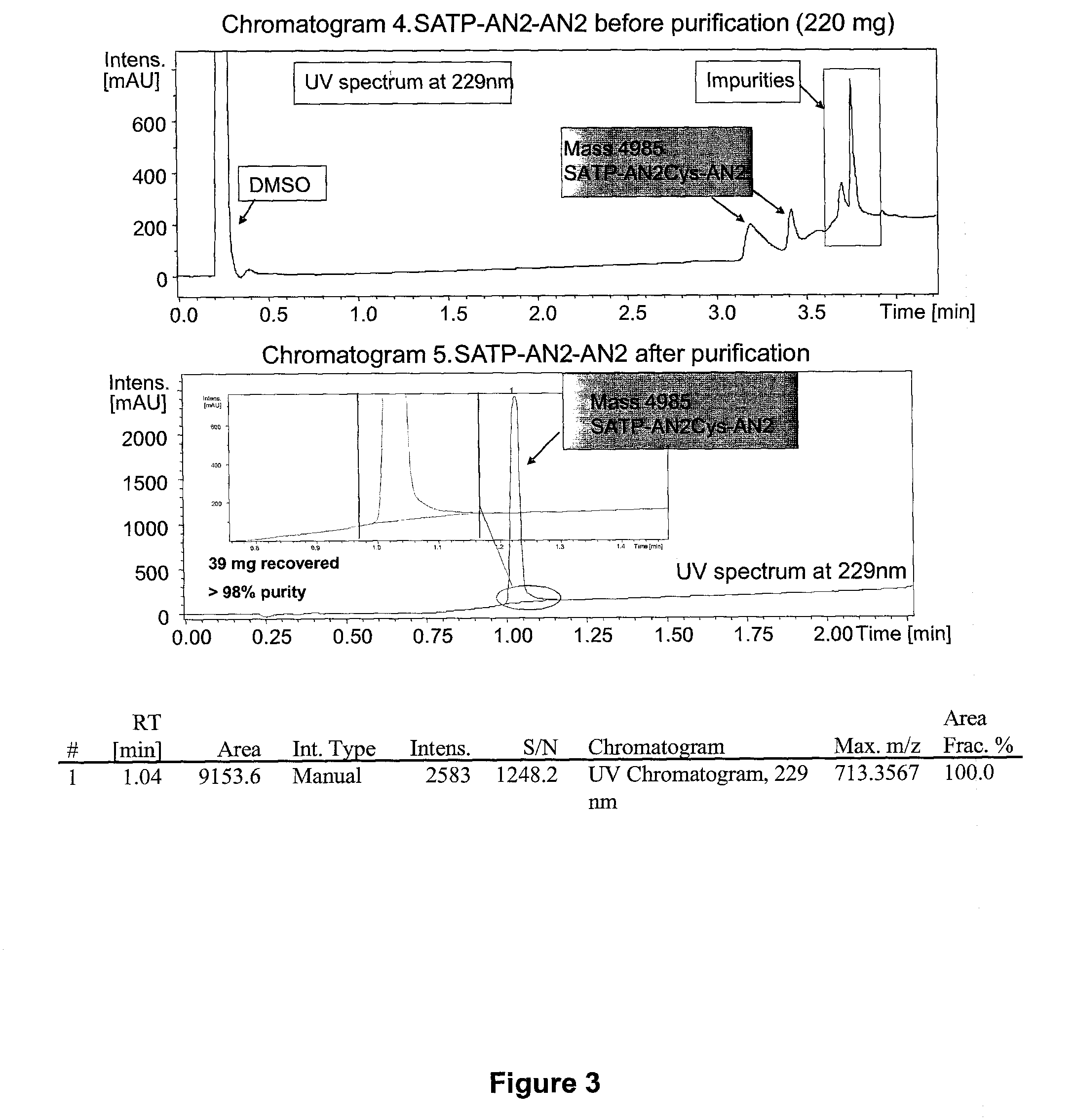Multimeric peptide conjugates and uses thereof
- Summary
- Abstract
- Description
- Claims
- Application Information
AI Technical Summary
Benefits of technology
Problems solved by technology
Method used
Image
Examples
example 1
Synthesis of Dimeric Angiopep-2 Using a TMEA Linker
[0273]The following scheme was used produce a dimeric form of Angiopep-2 joined by a TMEA linker.
[0274]C-terminally amidated Angiopep-2 with an additional C-terminal cysteine (Angiopep-2-Cys; SEQ ID NO:114) (264.2 mg, 109.9 umol, 2.4 eq.) was dissolved in urea 8 M (18 ml). This solution was added dropwise to a solution of TMEA (tris-(2-maleimidoethyl)amine) (Pierce Biotechnology) (17.7 mg, 45.8 umol, 1 eq. in 9 ml of urea 8 M). Monitoring of the reaction was done using the analytical methods 1 and 2 (which are described in chromatograms 1-2 of FIG. 1). The reaction (1.7 mM, pH 8.53) allowed to proceed at room temperature for 1 hour, and the mixture was purified by RP-HPLC chromatography (Waters PrepLC 4000; see chromatogram 3, Table 5).
TABLE 5PurificationColumn Flow Rate Time (min)Volume (C.V.)(ml / min)% Solvent B0.000.0013.0020.05.121.5213.0020.028.757.0113.0040.0 (over 23.63 min)33.301.3513.0095.0 (over 4.6 min)38.001.3913.0095.01 ...
example 2
Synthesis of Dimeric Angiopep-2
[0280]The following synthetic scheme was used to produce dimeric Angiopep-2 having an SATP linker.
[0281]Angiopep-2-Cys-NH2 (H-TFFYGGSRGKRNNFKTEEYC-NH2; SEQ ID NO:114) was synthesized using solid phase peptide synthesis (SPPS). G6S7 is coupled using pseudoproline dipeptide GS to optimize the synthesis. SPPS was carried out on a Protein Technologies, Inc. Symphony® peptide synthesizer using Fmoc (9-fluorenylmethyloxycarbonyl)amino-terminus protection. Angiopep-2-Cys-NH2 was synthesized on a 100-μmol scale using a 5-fold excess of Fmoc-amino acids (200 mM) relative to the resin. Coupling was performed from a Rink amide MBHA resin (with Nle) (0.40 mmol / g) for carboxyl-terminus amides using 1:1:2 amino acid / activator / NMM in DMF with HCTU (2-(1H-6-chlorobenzotriazol-1-yl)-1,1,3,3-tetramethyluronium hexafluorophosphate) and NMM (N-methylmorpholine). Deprotection was carried out using 20% piperidine / DMF.
[0282]Rink amide MBHA resin (with Nle) (0.40 mmol / g), Fmo...
example 3
Synthesis of an Angiopep-1 Dimer Using a Disulfide Bond
[0291]An Angiopep-1 dimer was prepared by incubating the Angiopep-1 peptide (SEQ ID NO:67) at 37° C. for 2 hours in phosphate buffered saline (PBS) at pH 8.5. This reaction resulted in formation of Angiopep-1 dimers joined by a disulfide bond through the cysteine amino acid on each protein (FIG. 5).
[0292]Volume of brain parenchymal distribution was measured using the in situ brain perfusion assay (FIG. 6). Great uptake volumes using the Angiopep-1 dimer were observed, especially at lower concentrations, as compared to monomeric Angiopep-2. Parenchymal uptake of the Angiopep-1 dimer and Angiopep-2 was also measured at various concentrations in situ (FIG. 7). Here, the Angiopep-1 dimer, especially at lower concentrations (<500 nmol), exhibited higher transport than the Angiopep-2 monomer.
PUM
| Property | Measurement | Unit |
|---|---|---|
| Fraction | aaaaa | aaaaa |
| Volume | aaaaa | aaaaa |
| Volume | aaaaa | aaaaa |
Abstract
Description
Claims
Application Information
 Login to View More
Login to View More - R&D
- Intellectual Property
- Life Sciences
- Materials
- Tech Scout
- Unparalleled Data Quality
- Higher Quality Content
- 60% Fewer Hallucinations
Browse by: Latest US Patents, China's latest patents, Technical Efficacy Thesaurus, Application Domain, Technology Topic, Popular Technical Reports.
© 2025 PatSnap. All rights reserved.Legal|Privacy policy|Modern Slavery Act Transparency Statement|Sitemap|About US| Contact US: help@patsnap.com



